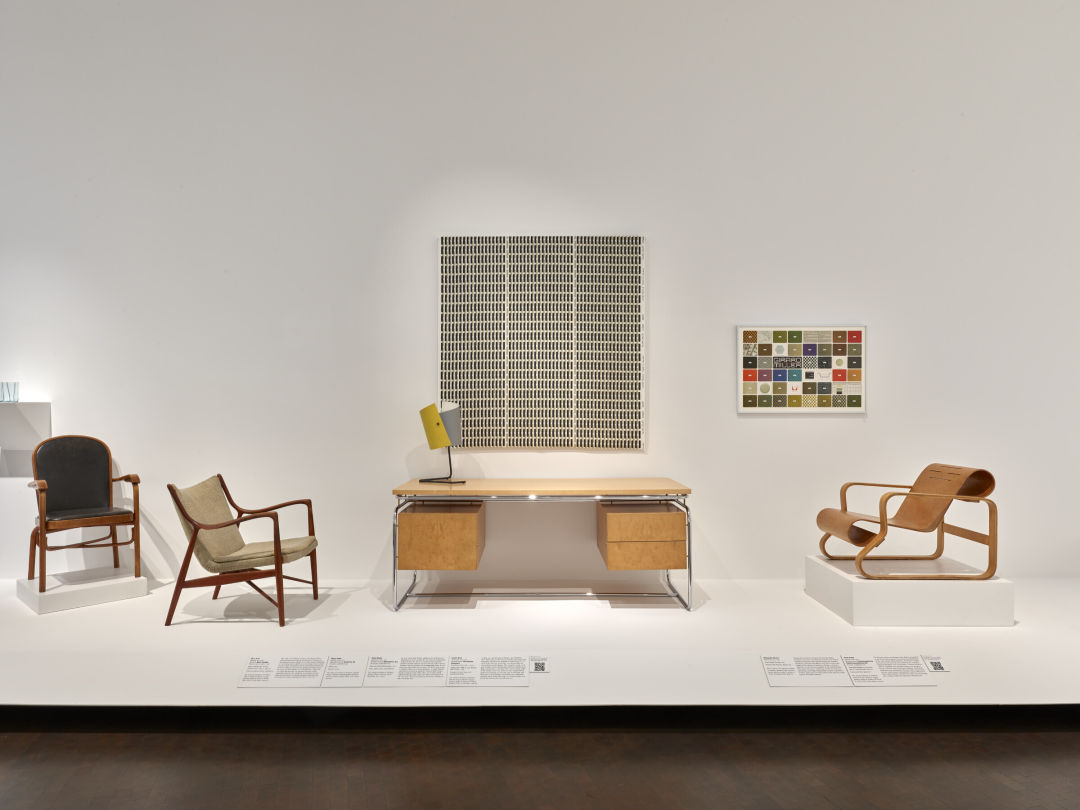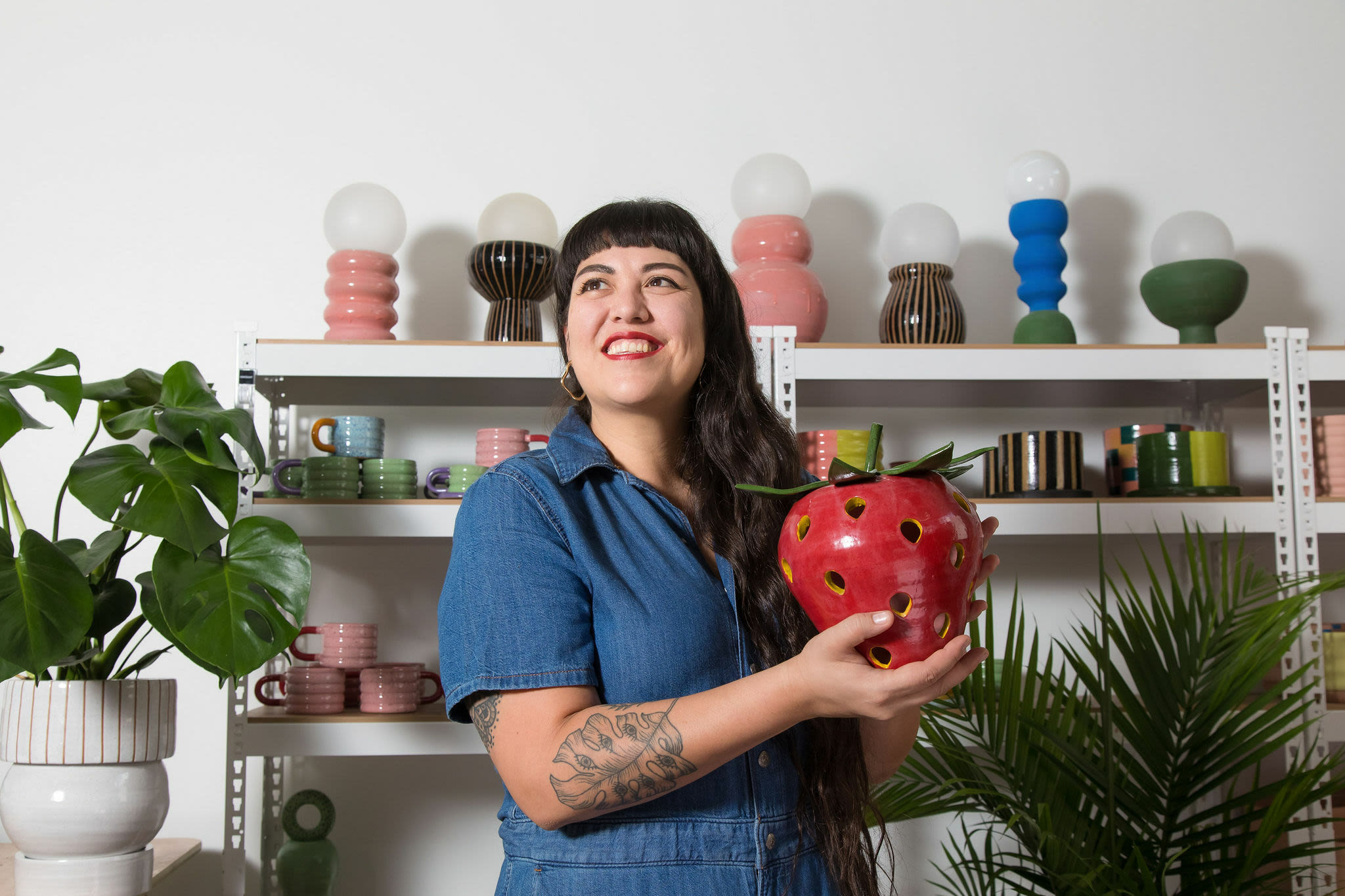MFAH’s 150 Years of Design Exhibit Is Small but Mighty

Image: Courtesy MFAH
Houstonia’s The Must List tells you about something going on in Houston that you absolutely cannot miss.
For the past 25 years, the Museum of Fine Arts, Houston and the local chapter of the American Institute of Architects (AIA) have enjoyed a unique collaboration, now the subject of 150 Years of Design, a celebratory exhibition running from August 31, 2024 through August 31, 2025. Approximately 65 objects spanning a century and a half of architecture and design history are on display in a small corner of the museum’s Kinder Building, showcasing the projects architects create beyond the blueprint.
“Architecture is both an art and a science,” says Rusty Bienvenue, executive director of AIA Houston. “[It’s] both making a beautiful object, whether it’s a skylight sculpture or an object that goes in the skylight sculpture, and making a beautiful object that also performs.”
The goal of the exhibit is to share with Houstonians what the MFAH and AIA Houston partnership has accomplished in only a quarter of a century, as well as providing a more well-rounded look at what architecture as a discipline entails. Architects possess skill sets that extend into crafting day-to-day objects meant to be used inside the places they design, such as furniture, cutlery, lamps, and tableware. All the pieces in the MFAH’s AIA Houston Collection were selected by honorees awarded annually by AIA Houston. This is the first time the works have all been displayed together in one space, as they’re usually set up elsewhere throughout the museum.

Image: Courtesy MFAH
Every year, the partnership awards one notable local architect with the opportunity to select a qualifying object to add to the MFAH’s permanent collection. AIA Houston provided the seed money for the initial project in 1999, and around $750,000 has been raised since via private donations from individuals, architecture firms, special events, and AIA Houston sponsors. Previous honorees have included Carrie Glassman Shoemake—a pivotal figure in organizing the collaboration between institutions—in 2022, the Astrodome’s Arthur E. Jones in 2010, and former AIA Houston executive director Martha Murphree in 2004. Lauren Rottet is this year’s selector, though her contribution has yet to be revealed.
No other city besides Houston plays host to such a connection between an AIA chapter and a local art museum, a point of pride for both Bienvenue and Cindi Strauss, the Sara and Bill Morgan curator of decorative arts, craft, and design at MFAH.
“Houston is such a civic-minded city, and people and organizations in Houston want to celebrate things for the greater good, for public knowledge as opposed to individual glory,” she says.
Honorees may select works made between 1890 and today, based on a set budget. They’re given a few different curated options, based off their personal tastes and aesthetic inspirations, which has led to an eclectic collection. One curious highlight is The Little Dripper Coffee Pot Prototype by Michael Graves, a piece of postmodernist porcelain with a clever “cup” that actually functions as a filter. Alvar Aalto’s controversial Vase from 1937 also makes an appearance. Such a piece is a rarity these days, as the wavy design meant to evoke flowing water scandalized the journalists who covered its debut at the Karhula-Iittala factory that produced it; many of them smashed the samples they received on their train rides home.

Image: Courtesy MFAH
Many honorees select chairs as their contributions, since so many architects involve themselves in designing this essential furniture piece. Gerrit Rietveld’s original pine “Zig-Zag” Chair from 1932 is on display. Italian design firm Cassina still mass produces the design to this day. LCP00 by Maarten Van Severen stands out in the exhibition space with its bright lemon yellow hue captured in transparent plastic. A full catalogue created to commemorate 150 Years of Design is available online, listing most of the collection’s holdings.
Some of the pieces have a local connection. Legendary interior designer and architect Sally Walsh—whose name graces a free lecture series through AIA Houston because of her heavy influence on the city’s aesthetic sensibilities—is represented here with her sleek, modernist Executive Desk Prototype from 1978. The desk’s presence provides a chance for visitors to learn a little more about how Houston came to look like itself. The collection tells a global story, but still loops back to emphasize the importance of our own homegrown talent and the one-of-a-kind relationship between AIA Houston and MFAH.
“It is about education and greater public access and the greater good,” Strauss says. “[Houston] is a very expansive, can-do city that’s all about sharing information and resources.”




